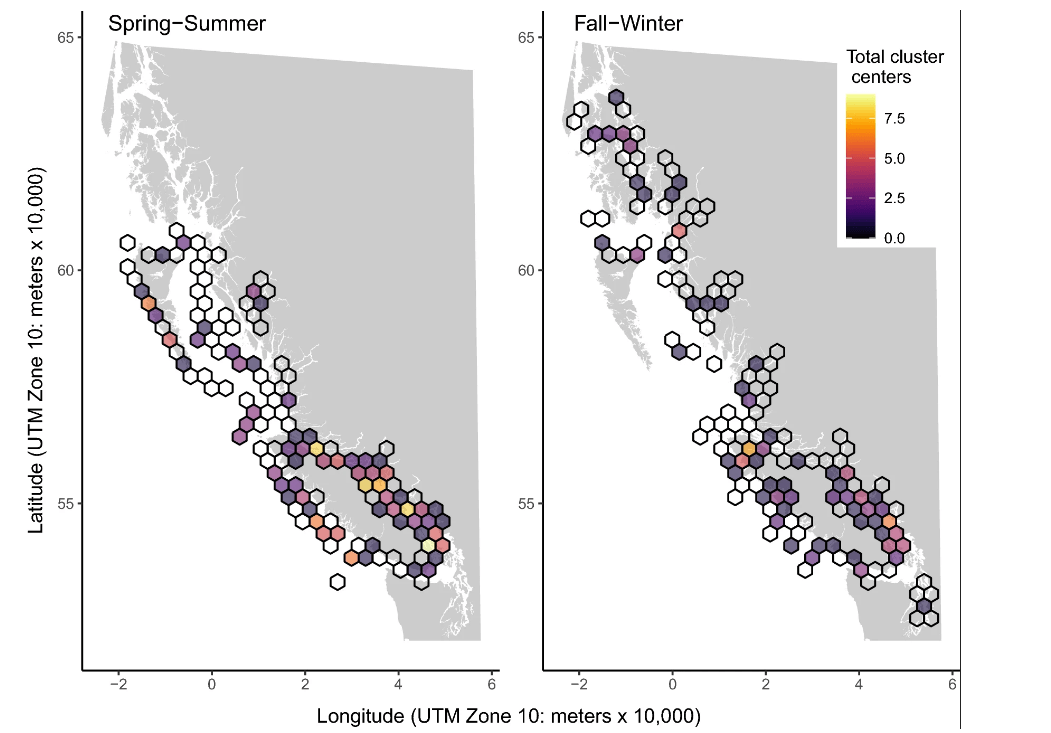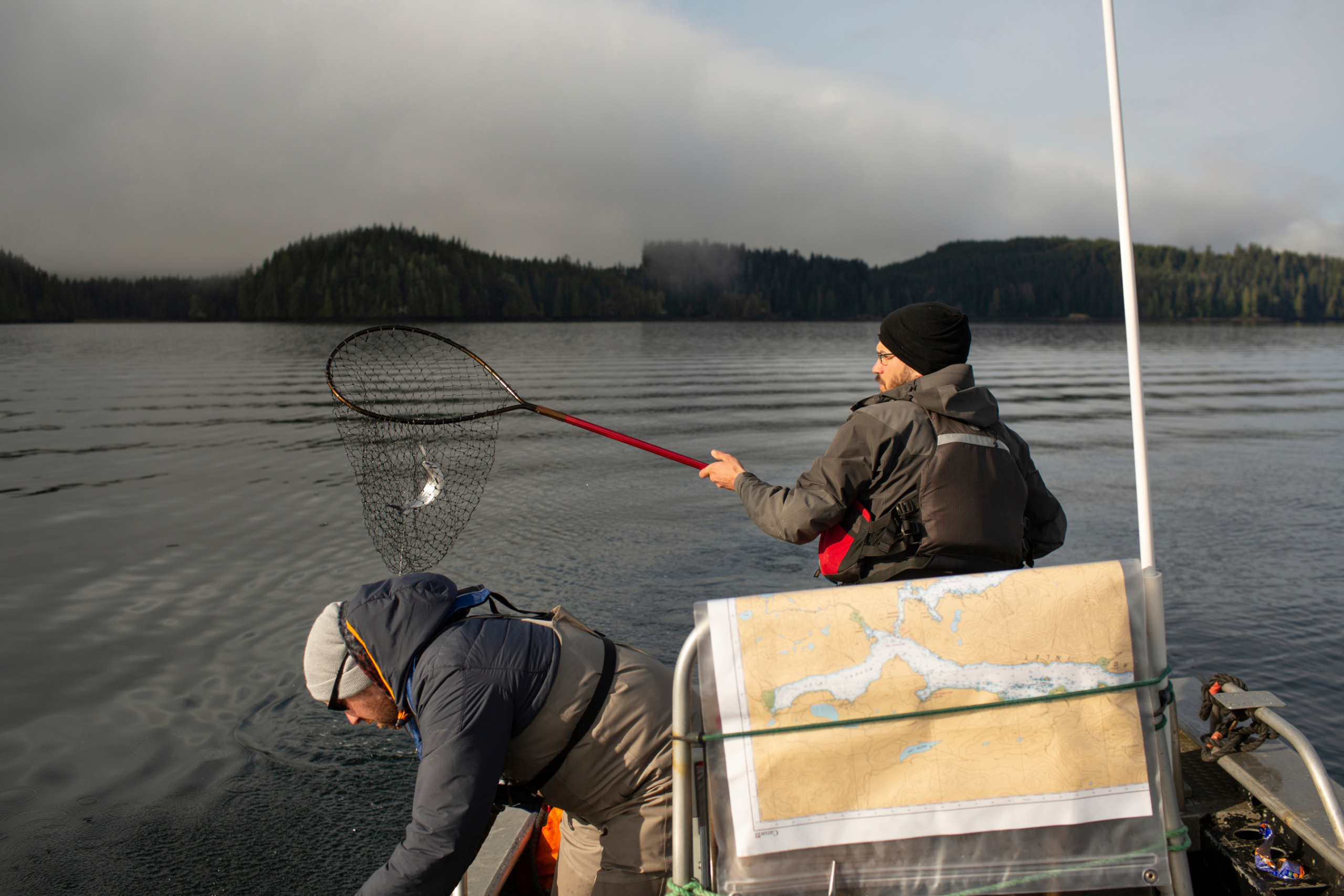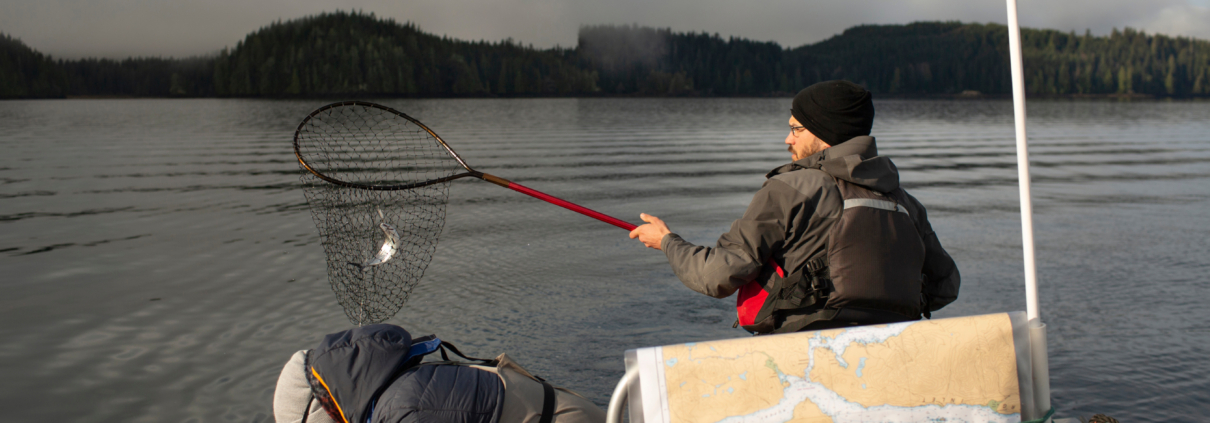Study investigates presence of infectious agents in wild Pacific salmon
New mapping research reveals hotspots for 41 infectious agents in wild Pacific salmon along B.C. coast.
A new study in Scientific Reports by Dr. Arthur Bass and coauthors assesses the marine distribution of dozens of infectious agents in wild Pacific salmon in the marine environment. This novel study reveals where salmon populations have experienced infection “hotspots,” some featuring potentially detrimental pathogens.
The research, supported by the Pacific Salmon Foundation’s Salmon Health Program, provides the most comprehensive assessment to date of the marine distributions of infectious agents in Chinook, coho, and sockeye salmon in B.C. during their first year at sea.
The majority of existing research on pathogen distribution in Pacific salmon in the marine environment comes from studies of farmed fish from aquaculture facilities, which do not necessarily reflect infectious agent distributions in nearby wild salmon populations. By considering free-roaming populations of fish, this study found a high density of pathogens along the East Coast of Vancouver Island, a major migration route and rearing area for multiple species of Pacific salmon.
Given that poor early marine survival is a contributing factor for declines in many B.C. salmon populations, a greater understanding of the role of infectious agents in this stage of the salmon life cycle is essential. Infectious agents, referred to as pathogens when they cause disease, can be strong regulators of the abundance, distribution, and life histories of wild animals including salmon.

This map shows the number of clusters of infection (with more infection than expected by chance) that were centred in each 30-kilometre hexagon. Empty cells indicate that salmon were collected in those locations but no infection clusters were found. (Source: Scientific Reports)
Through a broad epidemiology lens, it is crucial to identify areas with high rates of infection to gain a better understanding of how to manage outbreaks. For example, geography and epidemiology researchers recently conducted a hotspot analysis of the SARS-CoV-2 virus, which helped to increase our knowledge of the Covid-19 virus and also guided how public health resources should be allocated. This new salmon study does something similar for Pacific salmon.
In this study, the researchers determine the prevalence of 56 infectious agents in Chinook, sockeye, and coho salmon during their first marine year along the B.C. coast. Using a disease-mapping tool to determine the locations of clusters for each infectious agent, the scientists detect notable clusters for 41 of the 56 infectious agents.
This study advances ecological knowledge regarding some lesser-known pathogens, identifies salmon populations potentially impacted by specific pathogens, and pinpoints priority locations for future research and remediation. This research developed out of the Strategic Salmon Health Initiative (SSHI), a multi-year research project between Fisheries and Oceans Canada (DFO), Genome BC, and PSF.
“This is fundamental information that hasn’t been available to us until now,” says Dr. Andrew Bateman, manager of the Pacific Salmon Foundation’s (PSF) Salmon Health Program. “Our partnership between PSF and Dr. Kristi Miller’s lab at DFO, and in this case work with colleagues at UBC, has opened a window into an understudied aspect of salmon health,” Bateman added, noting that “it’s really the expertise in the DFO scientists involved that makes this work possible.”

(Amy Romer)
The SSHI launched in 2013 following the Cohen Commission of Inquiry into the Decline of Sockeye Salmon in the Fraser River, which investigated the decline of sockeye and provided a final report with recommendations in 2012. The process identified a knowledge gap with salmon pathogens. PSF’s Salmon Health Program, and the continued collaboration with DFO, has resulted from the success of the SSHI and continues to shed light on factors that impact the health of Pacific salmon. Some of the data that went into the current study have also been used to understand which of the infectious agents studied may be tied to poor survival in B.C.’s Chinook and coho salmon populations.
This study presents a descriptive spatial analysis of numerous pathogens in wild Pacific salmon that have previously been overlooked. The researchers anticipate that these distributions will be useful to those conducting further studies of pathogens in Pacific salmon as well as those seeking to identify potential locations for remediation.
“Further research is necessary to fully understand pathogen distributions and their implications for wild salmon in B.C’s coastal waters. Our current work in the Salmon Health Program focuses on possible cumulative impacts of pathogens and other environmental stressors,” says Bateman. “Ultimately, the goal is to identify targets for conservation that can support the natural resilience of wild salmon.”



